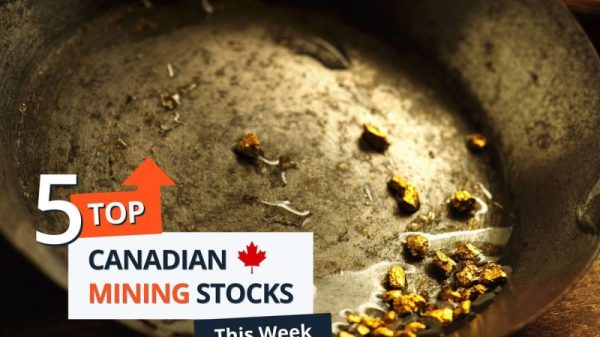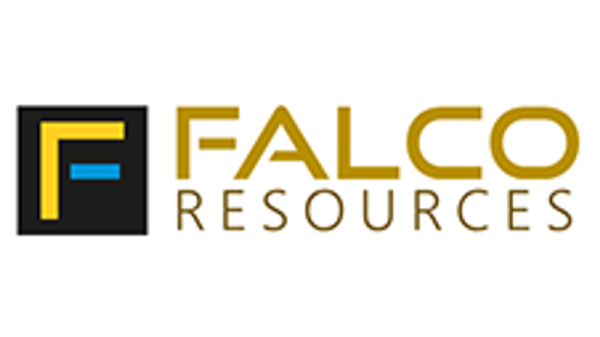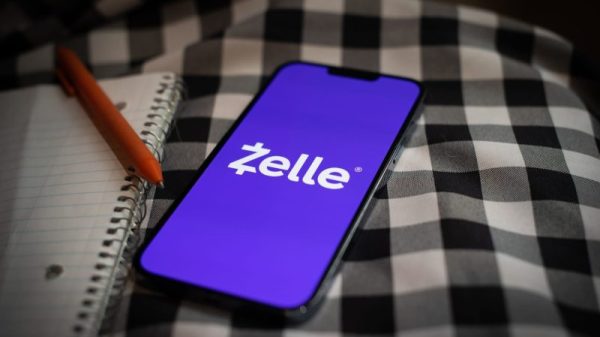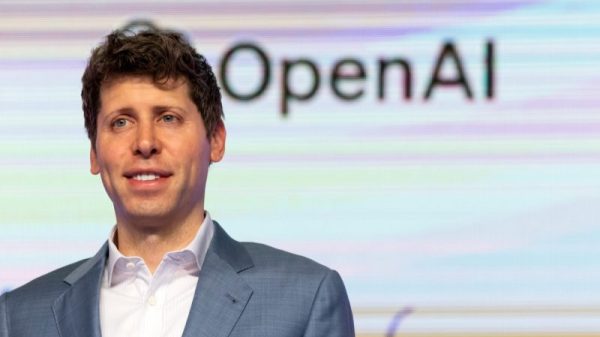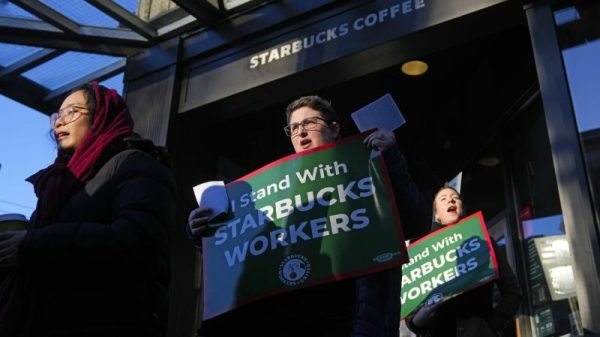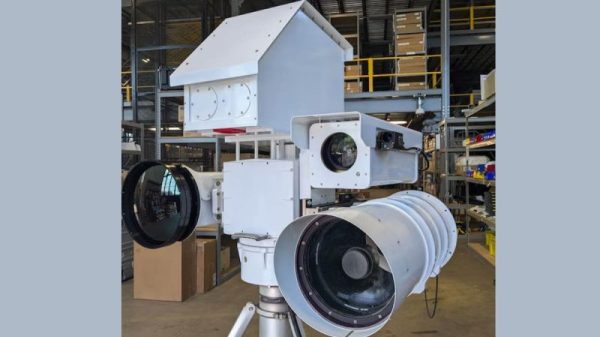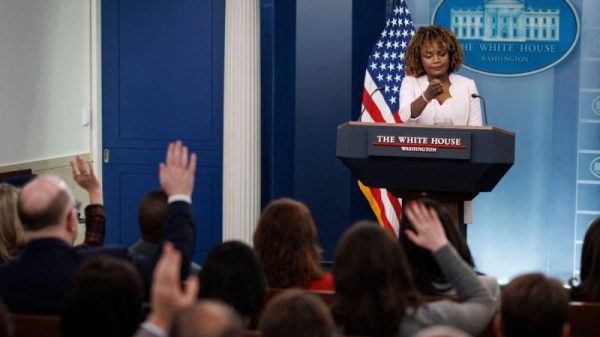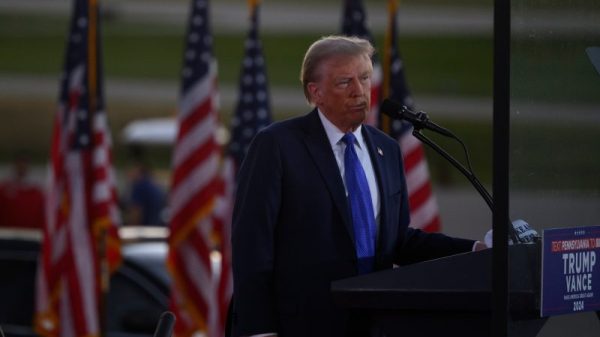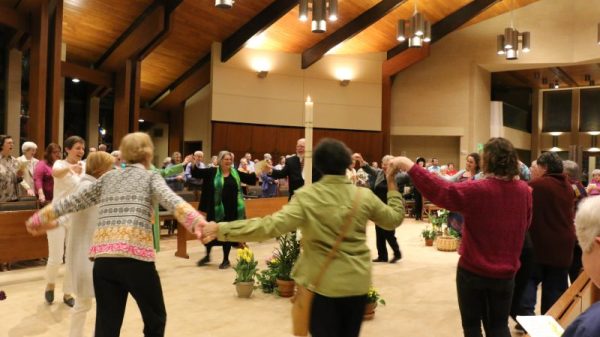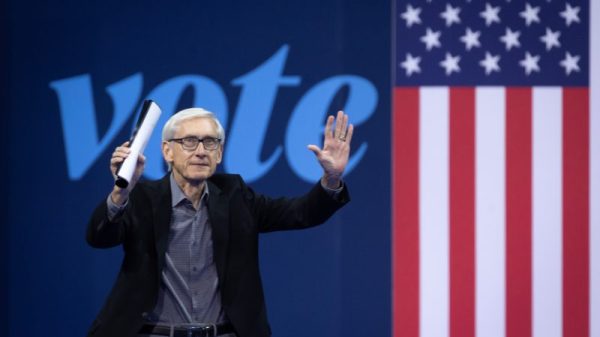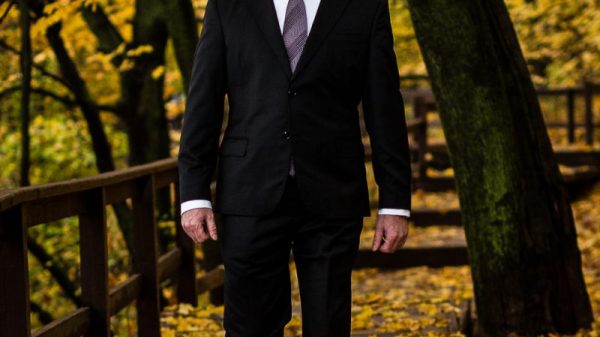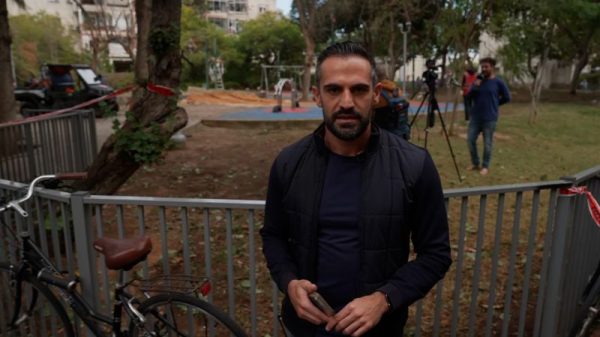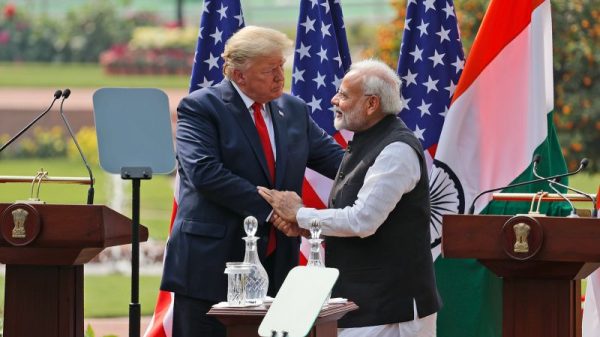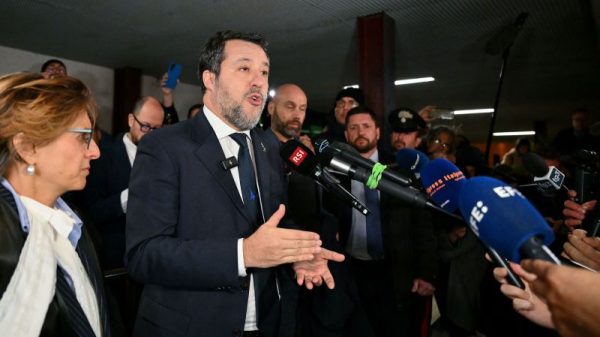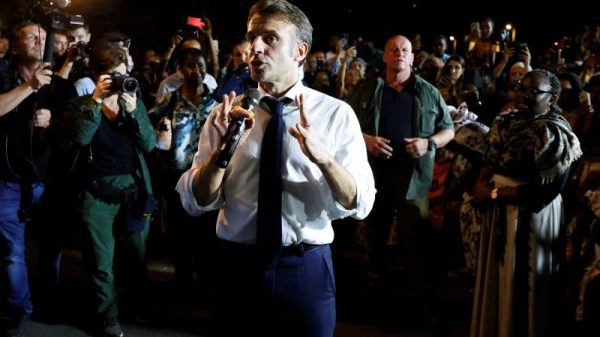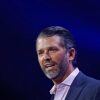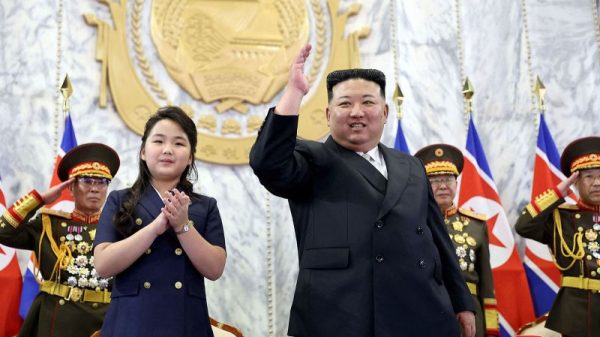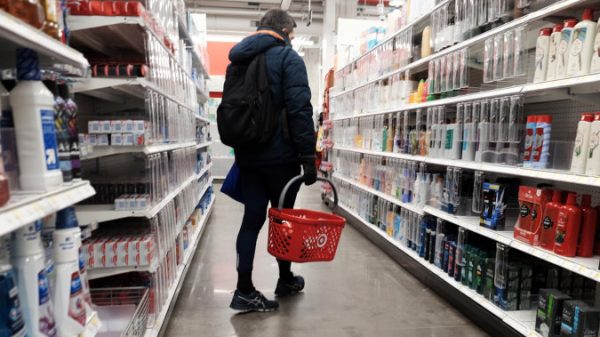TikToker Daniel Mac has attracted more than 14 million followers in two years by asking drivers of fancy cars, “What do you do for a living?” He’s interviewed Cheech and Chong in an Impala, Jay Leno in a Maserati, and other celebrities in their own swanky rides. His most popular subject yet: President Biden.
As Biden pulled up in a Cadillac LYRIQ at last year’s Detroit Auto Show for a prearranged exchange, Mac observed that “your car’s awesome!” and asked what Biden does for a living. “I’m married to Jill Biden,” the president said. “And I make sure we’re making a lot more electric vehicles in America.”
The brief video went viral, reaching 38 million people.
In his first two-and-a-half years as president, Biden has held fewer news conferences than his predecessors. He has given fewer interviews to major news organizations, despite his promise to restore traditional press relations after the Trump era.
At the same time, the White House is contacting an array of online influencers, social media personalities, TikTok stars and other nontraditional figures to spread its message, creating an alternative communication network that is different from previous presidencies.
Biden’s aides say they are responding to an evolution in the media landscape, not breaking sharply from precedent. But critics say that the strategy gives the White House far more control over the message, often letting Biden avoid scrutiny and sidestep the harder-hitting questions that traditional reporters might fire at him.
Mac readily concedes that his videos are not exactly journalism. Through brand deals, Mac is paid to fly to exotic destinations and shoot content that is carefully scheduled to publish when it fits the marketing strategy.
When the White House asked Mac to pay his own way to the Detroit Auto Show so he could capture a video of Biden driving an electric vehicle and upload it to TikTok, he said he thought to himself, “Who wouldn’t want to interview the president?”
The White House specified that Biden wanted the video to emphasize what his administration has done to get more EVs on the road — the sort of instruction that is anathema to traditional news organizations. In less than an hour, the video had a million views and it ultimately racked up more than 38 million, becoming Mac’s most-watched post.
Frank Sesno, a former CNN Washington bureau chief and now a George Washington University media professor, said it remains unclear how well the White House strategy is working, given Biden’s stalled popularity ratings, but that the goal is apparently to limit his exposure to unpredictable situations.
“For a gaffe-prone president who sounds like he’s mangling or mumbling his words, less may be more,” Sesno said. “Controlling his access is advantageous.”
Even some Biden supporters worry the strategy prevents voters from seeing an engaged president at a time when his campaign is seeking to counter questions about his age and vitality. Mike McCurry, who was President Bill Clinton’s press secretary, said news conferences give the White House a rare chance to sharpen its message and respond to public concerns.
“The press conference was an action-forcing event, because it forced the government to come up with better answers,” McCurry said. “That to me was one of the useful reasons why we needed to have regular encounters with the press.”
Ben LaBolt, the White House communications director, said Biden finds various ways to interact with journalists, for example taking questions after a speech or talking to reporters during a trip. And he noted that the White House gives reporters regular access to other top administration officials.
“Our communications strategy is ‘all of the above’ — which it must be to break through in a fractured media environment and an era of information overload,” LaBolt said. “We study where Americans get their information and make sure we are meeting them where they are, whether that is traditional newscasts, social media or consumer outlets.”
CBS’s 60 Minutes also scored exclusive time with the president at the Detroit Auto Show, and correspondent Scott Pelley used it to press Biden on such issues as how he would hold down gas prices amid the Ukraine war. Roughly 10 million people watched the 60 Minutes segment live, a smaller viewership than four NFL games airing at the same time, according to data collected by the Nielsen company.
Biden has granted a sit-down interview to one daily news print journalist, the Associated Press’s Josh Boak, during his term so far. He has also spoken to ProPublica, an investigative journalism organization.
The White House notes that Biden has spoken to such respected journalists as PBS’s Judy Woodruff and ABC’s David Muir. Still, many of his television interviews have been with specialized outlets, such as Comedy Central or the Weather Channel.
And he has done numerous interviews with less-traditional figures, from Brian Tyler Cohen, who hosts a podcast and YouTube show, to Heather Cox Richardson, who writes a newsletter on the online platform Substack.
When the White House celebrated the passage of the Inflation Reduction Act, social media influencers received a special briefing in the Roosevelt Room, including a presidential drop-in. In a virtual town hall on covid-19, Biden took questions from other online celebrities, including what skin care product he would take with him to a desert island.
Biden is hardly the first president to turn to nontraditional sources to reach a different audience. Clinton appeared on an MTV town hall in 1994 (where he was asked if he wore boxers or briefs). President Barack Obama appeared on the comedy show “Between Two Ferns” in 2014 (where he was asked, “How does it feel to be the last Black president?”)
Biden’s White House is betting on its digital-heavy strategy to amp up interest among a younger and more diverse group of voters. It has staffed a suite in the Eisenhower Executive Building, adjacent to the White House, with online-savvy aides charged with highlighting Biden’s accomplishments to that cohort.
Past iron gates, Secret Service agents and fortified walls that make WiFi reception spotty, the staffers strategize on how to make their audiences feel like they’re getting an inside peek.
One Friday in July, the aides were dressed in various shades of pink in a salute to the Barbie movie premiere, which had overtaken internet discourse that week. Several were editing videos about “Bidenomics” for online posting; others were preparing to brief social media influencers on the White House plans for Mental Health Week.
The walls were covered with cutouts of memes, such as Vice President Harris telling the president, “We did it, Joe,” after the election. The staff was heavily skewed toward the demographics the administration is trying to reach: young, female, diverse.
Biden has emphasized his respect for the media as a contrast with former president Donald Trump, who called the press the “enemy of the people,” described stories he disliked as “fake news” and suspended the White House daily news briefing.
Yet Biden has held the fewest news conferences at this point in his tenure of any president since George H.W. Bush — 13 solo and 17 joint — and many included just a handful of questions. He has also participated in the fewest interviews, 74, of any chief executive since Ronald Reagan, according to data compiled by presidential scholar Martha Kumar.
In comparison, Trump at this point in his presidency had held 52 news conferences and granted 273 interviews.
Every president going back decades has sat for interviews with The Washington Post and the New York Times, but Biden has so far declined to do so. (He has given access to generally friendly commentators like the Times’s Tom Friedman.)
Biden’s aides note that he often stops to take reporters’ questions, for example on his way to Air Force One, and he will sometimes take questions after prepared remarks. He has held 492 of these informal “gaggles,” according to Kumar, more than any president except Trump.
Still, those brief exchanges, unlike a news conference or sit-down interview, let Biden step away when he prefers not to answer a question or wants to avoid a follow-up.
Biden himself jokingly acknowledged his approach in his remarks at this year’s White House Correspondents’ Dinner. “In a lot of ways, this dinner sums up my first two years in office,” he said. “I’ll talk for 10 minutes, take zero questions, and cheerfully walk away.”
On some occasions, the limitations are especially evident. When Biden spoke to reporters at a Group of Seven summit in Hanoi in early September, he told them he would only call on five preselected journalists vetted by his staff.
“Go rogue, sir,” a broadcast reporter called out, to no avail. And when the president did start to answer unprompted questions, his mic was cut off.
White House officials note that it’s standard practice for a president’s staffers to give him names of reporters to call on before a news conference and to wrap up the event at a particular time.
One Biden aide said the president communicates with local media when he travels around the country, although Kumar’s figures show he holds fewer interviews with such outlets than his predecessors did. Cabinet members also do numerous interviews, the aide said.
White House aides point out that Biden has restored the ritual of the daily press briefing, usually hosted by press secretary Karine Jean-Pierre, after the Trump administration halted it. The aides are simultaneously somewhat dismissive of that forum, and they frequently complain that mainstream reporters lob unfair questions and focus on the negative.
To pinpoint those information sources, aides said they scrutinize reams of data, paying close attention to reports like one by the progressive public affairs firm Bully Pulpit Interactive, which asked respondents, “Where did you last see the president?”
Those data suggest that traditional media still play a major role, but that social media’s footprint is rapidly expanding. The Bully Pulpit report, shared internally in the White House and reviewed by The Post, found that voters mostly often said they’d seen the president on television news outlets, followed by Facebook. Print news came next, on par with Instagram and Twitter, trailed by YouTube and TikTok.
White House aides concede that some of Biden’s online appearances, like Mac’s TikTok at the auto show, are not overly substantive. They are aimed mostly at grabbing people’s attention, they say, while a second part of the strategy is focused on touting specific policies.
Mac said Biden’s burgeoning relationship with TikTokers shows that he is looking to engage with a younger audience, one that is unlikely to turn to traditional sources for its news. He doesn’t see that changing; Mac is in talks with administration officials to record a “crib tour” of the East Wing.
“The president of the United States is down to do a collab,” Mac said. “That’s also not a sentence that would have been uttered five years ago.”

